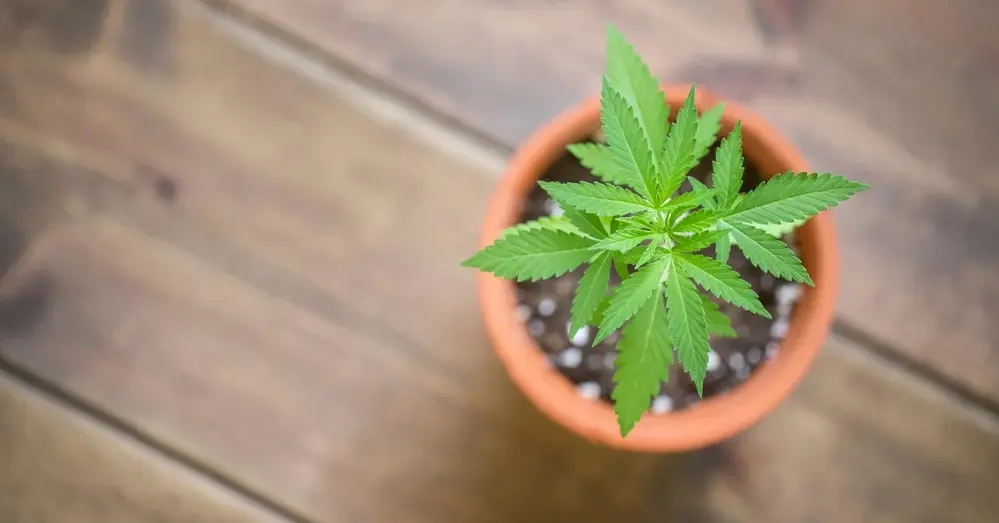What do major and minor cannabinoids do? They produce effects by interacting with specific receptors, located within different parts of the central nervous system. Simply put, cannabinoids regulate how cells communicate—how they send, receive, or process messages.

It's a magical plant!
How many cannabinoids are there? There are 100 different cannabinoids that have been isolated from the Cannabis plant. The two best known cannabinoids are THC and CBD, but other cannabinoids are starting to receive attention as cannabinoid research intensifies.
Cannabinoids: What Are They? The Cannabis sativa plant contains a multitude of chemical substances including cannabinoids, terpenes, and flavonoids. Not all cannabinoids are present in large amounts in every strain – or cultivar – or in the products manufactured from cannabis or hemp plants. The more abundant cannabinoids are considered major cannabinoids while the less abundant cannabinoids are called minor cannabinoids.
Popular Minor Cannabinoids
Thanks to a growth in research on cannabinoids, a lot of new information is coming available. Scientists have a better understanding of how THC and CBD work in the body and have also discovered a host of other less-prevalent cannabinoids. (Minor Cannabinoids)
Minor cannabinoids are simply chemicals that are found in smaller concentrations in cannabis plants. Like major cannabinoids, minor cannabinoids can still connect with cannabinoid receptors.
Here’s a quick list of cannabinoids that fit into the popular “minor” category.
CBN – Cannabinol
CBC – Cannabichromene
Delta 8 – Tetrahydrocannabinol
CBG – Cannabigerol
CBM – Cannabimovone
Details on Popular Minor Cannabinoids:
CBN – Cannabinol Cannabinol (CBN) — Believed to support joint and muscle function and aid a good night’s rest. CBN may help people feel more rested and get better sleep.
CBC – Cannabichromene — This third most common cannabinoid, also non-psychoactive, is thought to support mood and joint and muscle function. CBC is more prevalent than CBD in a large number of strains.
Delta 8 THC - Tetrahydrocannabinol — Δ8 is a minor cannabinoid with similar effects as delta 9 THC — only milder, smoother, and with less anxious side effects.
CBG – Cannabigerol — Non-psychoactive and used to support mood and joint and muscle function. CBG is essential because of its major role in the production of THC and CBD.
CBM - Cannabimovone — A rare cannabinoid. Cannabimovone is a phytocannabinoid first isolated from a non-psychoactive strain of Cannabis sativa.
Major Cannabinoids
The following are a number of popular cannabinoids, and you will find that they have unique properties:
CBDA – Cannabidiolic Acid — THCA and CBDA are usually the most abundant cannabinoids in strains. CBDA has many similar properties to CBD (cannabidiol). It is found in raw hemp or raw marijuana strains high in CBD. Once it heats up above a certain temperature, CBDA turns to CBD. Researchers believe it helps regulate sleep, anxiety, and mood.
THCA – Tetrahydrocannabinolic Acid — THCA and CBDA are usually the most abundant cannabinoids in strains. This compound found in raw cannabis that are non-psychotropic. What’s interesting is that THCA converts to the psychoactive compound THC once it’s exposed to heat, this process is known as decarboxylation. For this reason, THCA is only found in raw and live cannabis plants.
THC – Tetrahydrocannabinol — The primary psychoactive compound in cannabis that gives users a feeling of euphoria. Many consumers look to THC for its beneficial properties such as its effects on appetite, sleep, mood, and comfort levels.
CBD – Cannabidiol — The second most common cannabinoid produced by the cannabis plant that is non-psychotropic (it doesn’t get you high). In fact, many researchers believe CBD counters THC's psychoactive effects on the human body and mind. CBD-derived hemp is legal in all 50 states thanks to the passing of the Farm Bill in 2018.
CBDV – Cannabidivarin — It The second most common cannabinoid produced by the cannabis plant that is non-psychotropic (it doesn’t get you high). Strains with a lot of CBD flower will also often have higher levels of CBDV.
THCV – Tetrahydrocannabivarin — Less psychoactive than THC. Reports are that consumption with a lot of THCV provides a small burst of energy along with a mild high that doesn’t last long.
CBGA – Cannabigerolic Acid — The raw form of CBG (cannabigerol). CGBA is a unique compound that forms the building block for major cannabinoids THC, CBD, and CBC. Research indicates that CBGA also holds significant therapeutic potential, with studies thus far suggesting antioxidative and anticancer properties.
Current List of Cannabinoids in Cannabis
While the exact number of cannabinoids is still not totally known, there are a good amount of cannabinoids in cannabis that have been confirmed, studied, researched, and explored.
Cannabicyclols
Cannabicyclolic acid (CBLA)
Cannabicyclol (CBL)
Cannabicyclovarin (CBLV)
Cannabichromenes
Cannabichromene (CBC)
Cannabi
chromevarinic acid (CBCVA)
Cannabichromenic acid (CBCA)
Cannabichromevarin (CBCV)
Cannabielsoins
Cannabielsoin (CBE)
Cannabielsoin acid A (CBEA-A)
Cannabielsoic acid B (CBEA-B)
Cannabitriols
10-Ethoxy-9-hydroxy-delta-6a-tetrahydrocannabinol
8,9-Dihydroxy-delta-6a-tetrahydrocannabinol
Cannabitriol (CBT)
Cannabitriolvarin (CBTV)
Cannabidiols
Cannabidiol (CBD)
Cannabidiol monomethylether (CBDM)
Cannabidiolic acid (CBDA)
Cannabidivarinic acid (CBDVA)
Cannabidiorcol (CBD-C1)
Cannabidivarin (CBDV)
Cannabidiphorol (CBDP)
Cannabigerols
Cannabigerol (CBG)
Cannabigerovarin (CBGV)
Cannabigerovarinic acid (CBGVA)
Cannabigerol monomethylether (CBGM)
Cannabigerolic acid monomethyl
ether (CBGAM)
Cannabigerolic acid (CBGA)
Cannabinols and cannabinodiols
Cannabinolic acid (CBNA)
Cannabinodiol (CBND)
Cannabinodivarin (CBVD)
Cannabinol (CBN)
Cannabiorcool (CBN-C1)
Cannabivarin (CBV)
Cannabinol methylether (CBNM)
Cannabinol-C2 (CBN-C2)
Cannabinol-C4 (CBN-C4)
Delta-8-tetrahydrocannabinols
Delta-8-tetrahydrocannabinol (Δ8-THC)
Delta-8-tetrahydrocannabinolic acid (Δ8-THCA)
Delta-9-tetrahydrocannabinols
Delta-9-tetrahydrocannabinol (THC)
Delta-9-tetrahydrocannabinol-C4 (THC-C4)
Delta-9-tetrahydrocannabiorcol (THC-C1)
Delta-9-tetrahydrocannabiorcolic acid (THCA-C1)
Delta-9-tetrahydrocannabinolic acid-C4 (THCA-C4)
Delta-9-tetrahydrocannabivarin (THCV)
Delta-9-tetrahydrocannabivarinic acid (THCVA)
Delta-9-tetrahydrocannabinolic acid A (THCA-A)
Delta-9-tetrahydrocannabinolic acid B (THCA-B)
Delta-9-tetrahydrocannabiphorol (THCP)
Other Cannabinoids
10-Oxo-delta-6a-tetrahydrocannabinol (OTHC)
Cannabichromanon (CBCF)
Cannabifuran (CBF)
Cannabiglendol
Delta-9-cis-tetrahydrocannabinol (cis-THC)
Cannbicitran (CBT)
Dehydrocannabifuran (DCBF)
Tryhydroxy-delta-9-tetrahydrocannabinol (triOH-THC)
Cannabiripsol (CBR)
Sources
(PDF) Evolution of the Cannabinoid and Terpene Content during the Growth of Cannabis sativa Plants from Different Chemotypes (researchgate.net)(Journal of Natural Products)
Chemistry of Cannabis: Development & Modification of Bioactivity (Comprehensive Natural Products II)
NIH to investigate minor cannabinoids and terpenes for potential pain-relieving properties (NIH Press Release)
The team at HOKO Holistics provides a path to h
ealth and good cheer through body, mind, and cutting-edge technology. To connect with HOKO, click here.

